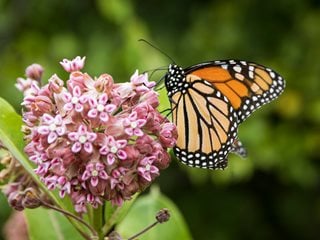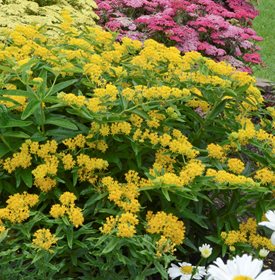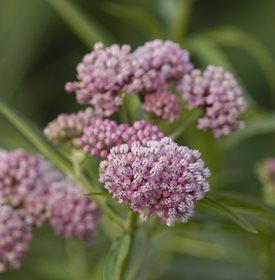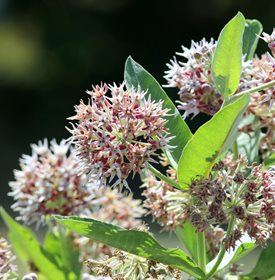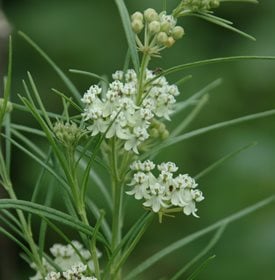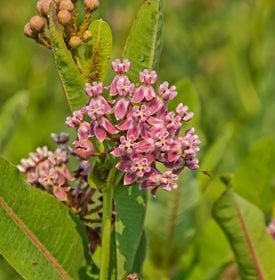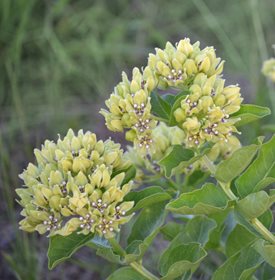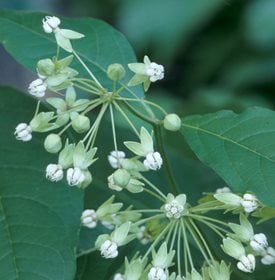Milkweed Plants: Growing Milkweed for Monarchs
Help monarch butterflies while beautifying your flower garden with this native perennialNever judge a plant by its name. That’s certainly the case with this wildflower that isn’t really a weed at all. This tough native of North American fields, wetlands, and prairies is the sole host plant for the struggling monarch butterfly.
“Summer in a milkweed patch is a colorful place,” says Aunrag Agrawal, author of Monarchs and Milkweed. “Not only are the flowers beautiful, but fragrances waft by and bees are buzzing around. And you might see a monarch butterfly perched on a flower or find one of its caterpillars grazing the leaves.”
On this page: Basics | Growing | Care | Milkweed Pictures | Using Milkweed in the Garden
MILKWEED BASICS
Milkweeds (Asclepias) get their name from the sticky white sap that oozes from the leaves when they are damaged. More than 100 species of this herbaceous perennial are native to the U.S. and Canada.
Types of milkweed:
Three species of milkweed are good all-around choices for gardens in most regions of the country:
- Common milkweed (A. syriaca)
- Swamp milkweed (A. incarnata)
- Butterfly weed (A. tuberosa)
Swamp milkweed and butterfly weed are highly ornamental and available in a variety of cultivars. The National Wildlife Federation has more information on the best regional nectar plants for monarchs.
Tropical milkweed (Asclepias curassavica) is a non-native species that should be avoided, as it can cause harm to monarchs. Read more about it from the Xeres Society.
Flower characteristics:
The petite, star-shaped flowers of milkweed are perfectly designed for pollination. Depending on the plant, milkweed flowers bloom in yellow, green, purple, pink, or orange. Equally well designed are the large seed pods that develop from the fertilized flowers. In the fall, these proficient self-sowers split open to release hundreds of seeds.
Height:
2 to 5 feet, depending on the speciesZones:
3-9Attracts:
Besides monarchs, frequent visitors also include native bees, honey bees, hummingbirds, and many other types of butterflies. Read more about the best perennials for pollinators.Why it’s a must for monarchs:
Milkweed is both a food source and the only host plant for monarch butterflies, who lay their eggs on the underside of the leaves. The larvae feed on the leaves after hatching, but cause no permanent damage to the plant. In turn, the toxic chemicals in the sap of milkweed plants make both the caterpillars and adult butterflies unappetizing to predators.
“[During monarch migration] flight is fueled by nectaring on the flowers and is punctuated by laying eggs on milkweeds. To grow and sustain each generation, milkweed is the only food needed,” says Agrawal.
GROWING MILKWEED
Where to plant:
Most milkweeds require full sun (at least 6 to 8 hours a day). Because they self-seed readily, locate your plants in a part of the garden where you can better control their rampant spread, such as at the back of the border or in a corner. A spot that’s protected from the wind will also help prevent the spread of seeds while providing a more hospitable environment for butterflies. It's important to note that milkweed plants have a taproot and do not transplant well.
When to plant:
If you’re planting milkweed from seed, sow the seeds outdoors in the fall, which will give them the period of stratification (exposure to cold, moist conditions) they need to encourage spring germination and ensure a good display of flowers the following summer. If you purchase starter plants, plant them in the spring after the danger of frost has passed.
Soil:
The best soil type for milkweed often depends on its native habitat. Most varieties are extremely forgiving and will grow well in average garden soil. Swamp milkweed is an exception and requires moist, humus-rich soil.
How to plant:
To ensure successful germination of milkweed seeds, plant them in a smooth, clump-free soil bed worked to a fine consistency using a rake or rototiller. After you’ve sown the seeds, compact them into the soil (but don’t cover them) to provide good soil-to-seed contact. Keep the planting bed moist until the seedlings become established. As your plants begin to take off, thin out any plants that are spaced too closely together so they don’t compete for sun and soil nutrients.
Spacing:
To attract multitudes of monarchs to your garden, plant milkweed in groups of six or more, spacing plants or thinning seedlings to about 6 to 24 inches apart, depending on the species. “Monarchs are very good at finding a milkweed plant, but the more you have in your yard, the more likely they will find it and lay their little eggs all over it. Plant as many plants as you have room for,” recommends Kelly Ballard of Joyful Butterfly, a supplier of butterfly plants and seeds.
Propagating:
Many milkweed species can readily be grown from root or rhizome cuttings as well as by seed. Take the cuttings during the late fall or early spring when the plant is dormant and has more energy reserves. New sprouts will form from the cuttings when the weather warms and will often produce flowers the first year.
MILKWEED CARE
Like most wildflowers, milkweed is easy to grow and requires very little pampering. Most species are not seriously bothered by heat, drought, deer or other pests. And because milkweed is a native plant that tolerates poor soils, fertilization isn’t necessary.
Mulching:
You can mulch milkweed if you want to control weeds or retain moisture, but not all varieties will benefit. Swamp milkweed will appreciate your water-retention efforts, but milkweeds that prefer dry soil, such as common milkweed and butterfly weed, are usually better off with no mulch.
Pruning:
As with many flowering perennials, removing withered flowers can result in new buds—prolonging the availability of nectar for monarchs and other pollinators. Simply remove the flower cluster just above the first set of leaves.
Pest control:
Some plant pests such as aphids, whiteflies and milkweed bugs are immune to the toxic effects of milkweed and may feed on the leaves and seed pods, but they rarely cause significant damage. Also remove leaf litter and spent stalks in the fall to eliminate overwintering sites.
How to control spreading:
If you don’t want milkweed to take charge of your garden, remove the seed pods in the fall before they split open and release their contents or tie them closed with string. For plants with rhizomes, thin them out by hand by pulling the entire plant, including the roots, removing as much of the rhizome as possible. This will be easier to do when the plants are young and before the roots are well established.
Handling precautions and toxicity:
Be aware that the toxic alkaloids in the sap of milkweed that help protect the monarchs from predators can cause eye and skin irritation and are poisonous to pets and other animals when ingested. Take the appropriate precautions and wear gloves, long sleeves, and long pants when working with these plants. See more about Common Poisonous Plants for Dogs & Cats.
MILKWEED PICTURES
IDEAS FOR USING MILKWEED IN THE GARDEN
- Create a stylized prairie garden by planting milkweed along with other rugged sun-loving native plants such as goldenrod, Arkansas blue star, prairie dropseed, and black-eyed Susan.
- Plant swamp milkweed along with other water-loving plants in a pond or rain garden.
- For an eye-catching contrast, pair the vibrant orange flowers of butterfly weed with blue, lavender, or rose-colored flowering perennials such as asters, Joe Pye weed, balloon flower, and meadow sage (Salvia nemerosa 'Caradonna').
- Combine milkweed with other butterfly-friendly perennials to create a colorful and diverse pollinator garden. (See 25 Butterfly Garden Plants.)
- Plant a native wildflower habitat from seed by combining milkweed with other plants that can provide a continuous source of pollen and nectar throughout the growing season. Download this step-by-step guide from The Xerces Society.
See more ideas on creating a butterfly garden.
RELATED:
20+ Rain Garden Plants
Gardening for Wildlife
20 Full-Sun Perennials
20+ Cottage Garden Plants
